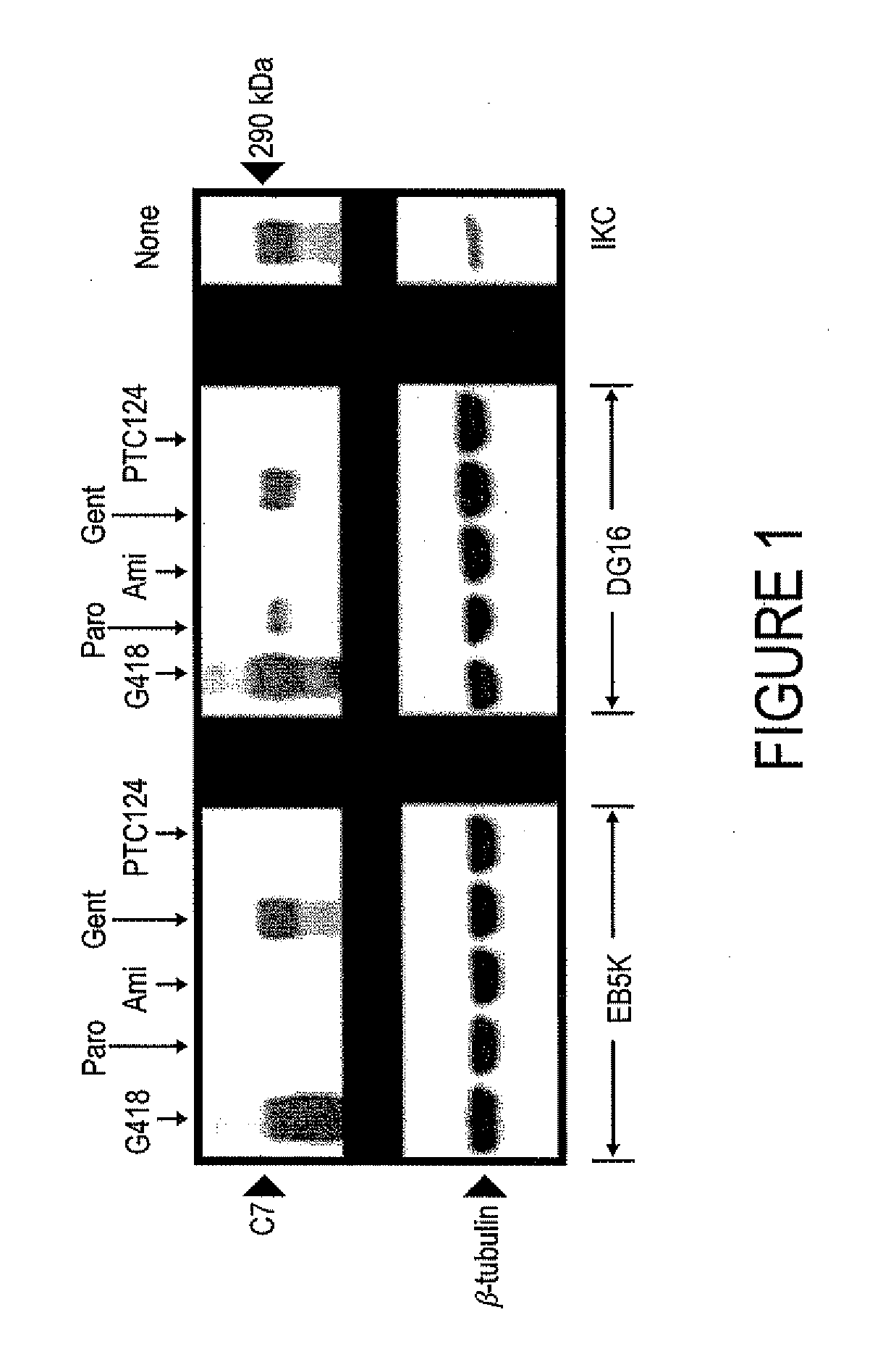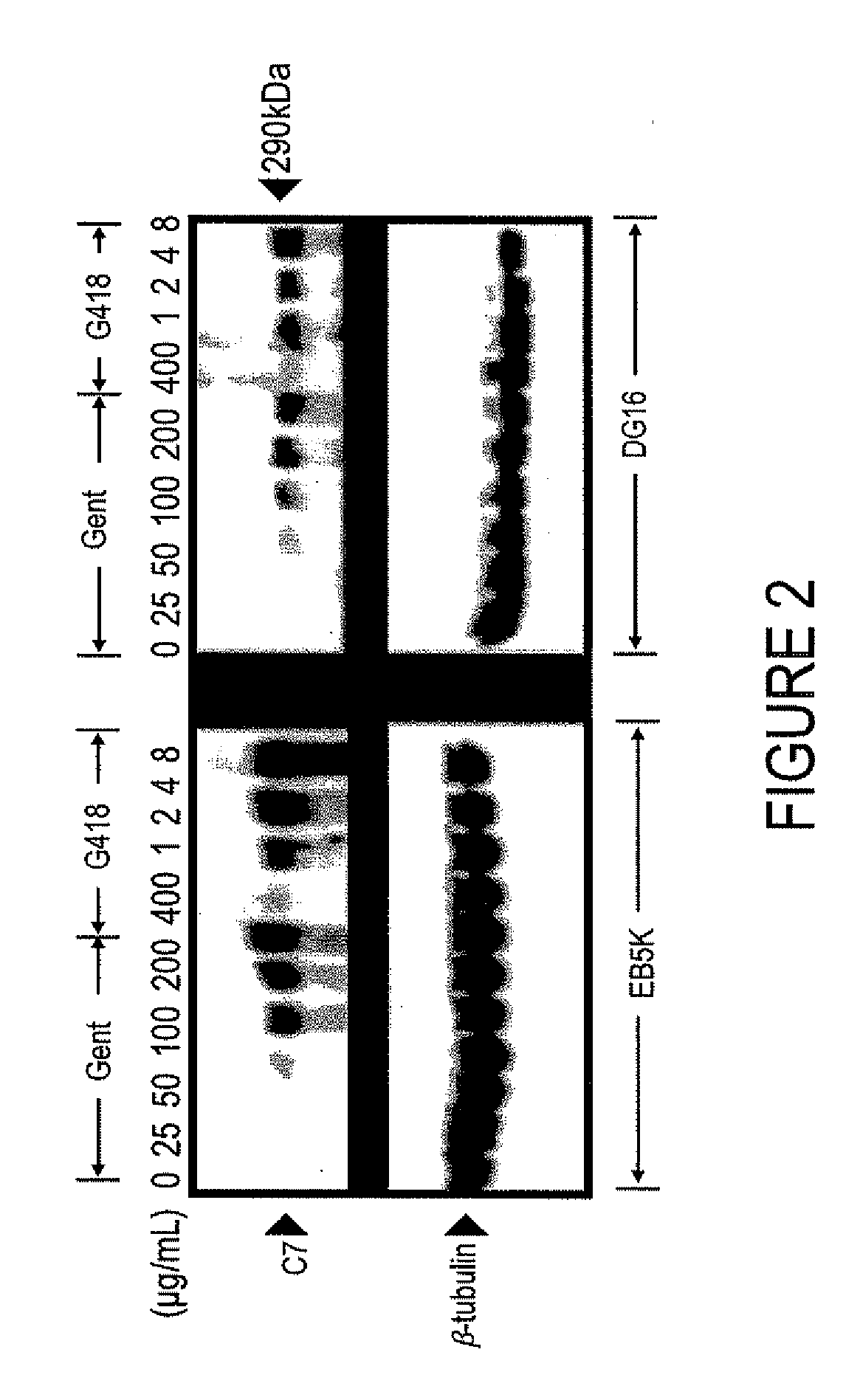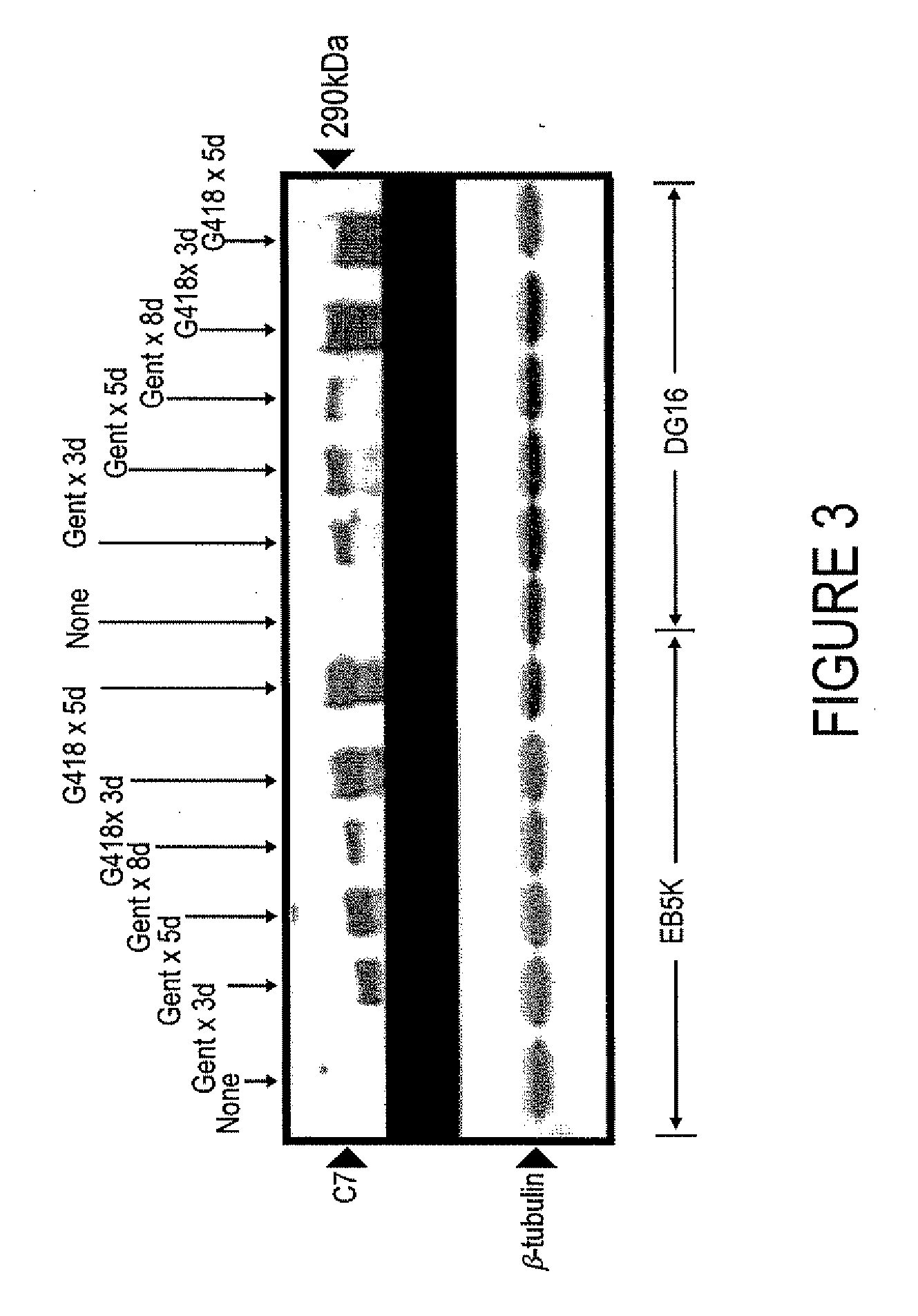Methods and Agents for Enhancing Wound Healing
a technology of col7a1 and wound healing, applied in the direction of biocide, drug composition, peptide/protein ingredients, etc., can solve the problems of eb patients easily forming blisters and skin erosion, vision loss, disfigurement, other serious medical problems,
- Summary
- Abstract
- Description
- Claims
- Application Information
AI Technical Summary
Benefits of technology
Problems solved by technology
Method used
Image
Examples
examples
[0054]Aminoglycosides are Capable of Inducing Expression of Full-Length C7 in Cells Containing Nonsense Mutations in the COL7A1 gene
[0055]RDEB keratinocytes were treated for 48 h with either G418 (8 μg / mL), gentamicin (200 μg / mL), paromomcyin (200 μg / mL), amikacin (1 mg / mL), or PTC 124 (20 μg / mL). Cells were subsequently lysed and subjected to immunoblot analysis with anti-NC1 antibody or anti-β-tubulin antibody (loading control). Note in FIG. 1 that treatment with G418 and gentamicin induced full-length C7 production in both EB5K and DG16 keratinocytes. Paromomycin induced read-through in DG16 cells only, while Amikacin and PTC124 did not cause read-through in either keratinocyte line. Note that a single dose of the treatment drug resulted in read-through and produced C7 at a level of 10-35% of that observed in normal human keratinocytes (IKC).
Aminoglycoside Induced Expression of Full-Length C7 in Cells Containing Nonsense Mutations is Dose Dependent
[0056]RDEB keratinocytes were tr...
PUM
| Property | Measurement | Unit |
|---|---|---|
| size | aaaaa | aaaaa |
| fragile | aaaaa | aaaaa |
| friction | aaaaa | aaaaa |
Abstract
Description
Claims
Application Information
 Login to View More
Login to View More - R&D
- Intellectual Property
- Life Sciences
- Materials
- Tech Scout
- Unparalleled Data Quality
- Higher Quality Content
- 60% Fewer Hallucinations
Browse by: Latest US Patents, China's latest patents, Technical Efficacy Thesaurus, Application Domain, Technology Topic, Popular Technical Reports.
© 2025 PatSnap. All rights reserved.Legal|Privacy policy|Modern Slavery Act Transparency Statement|Sitemap|About US| Contact US: help@patsnap.com



